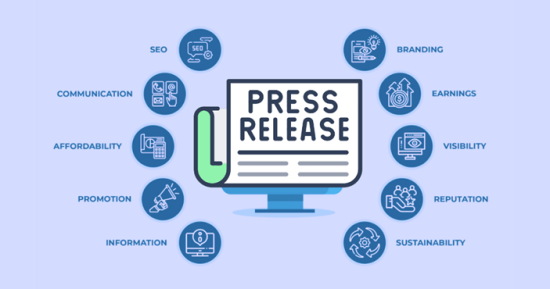
Starting a speech can be a challenging task, as it sets the tone for the entire presentation. The opening remarks play a crucial role in capturing the audience’s attention and establishing a connection with them. That’s why it’s essential to master the art of crafting a strong and captivating opening for your speech.
This section offers expert tips and strategies for creating a powerful speech opening. It emphasizes the importance of opening remarks in shaping the audience’s perception of you as a speaker. By analyzing memorable openings from history, you’ll learn techniques to grab attention and make a lasting impression. Whether you’re experienced or new to public speaking, this section aims to help you start your speech confidently and authoritatively
Impact of Your Opening Remarks

The opening remarks of a speech can have a profound impact on the audience. The psychology behind first impressions plays a crucial role in shaping the audience’s perception of the speaker and setting the tone for the entire presentation.
When delivering a speech, the goal is to make a memorable and engaging introduction that captures the attention of the audience from the very beginning. A strong opening not only establishes credibility but also establishes a connection with the listeners.
The Psychology Behind First Impressions
First impressions are formed within seconds of meeting someone, and the same holds true for the opening moments of a speech. The audience forms opinions based on the speaker’s confidence, body language, and delivery style.
Understanding the psychology behind first impressions helps speakers make intentional choices in their opening remarks. Body language, tone of voice, and facial expressions all contribute to the overall impression the audience forms.
Research shows that people tend to make judgments about others based on initial limited information, known as the halo effect. This means that a positive first impression can lead the audience to view the speaker more favorably throughout the speech.
By leveraging the psychology of first impressions, speakers can strategically craft their opening remarks to leave a lasting impact on the audience and set the stage for a successful presentation.
Analyzing the Most Memorable Speech Introductions in History
Throughout history, there have been countless memorable speech introductions that have captivated audiences around the world. Analyzing these iconic introductions provides valuable insights into what makes them so powerful and effective.
From Martin Luther King Jr.’s legendary “I Have a Dream” speech to Steve Jobs’ iconic iPhone launch, these historic introductions share common characteristics that contribute to their impact. They often start with a compelling story, a thought-provoking question, or a powerful quote that grabs the audience’s attention right from the start.
Making a Connection with Your Audience Immediately
Connecting with the audience right from the start is essential for a successful speech. In this section, we will discuss strategies for making an immediate connection with your audience to captivate their attention and hold their interest throughout your presentation.
Personalizing Your Approach
One of the most effective ways to connect with your audience is by personalizing your approach. When you tailor your speech to resonate with your listeners, they feel seen, heard, and understood. This can be done by understanding the demographics, interests, and experiences of your audience.
To personalize your approach, start by doing thorough research on your audience. Consider their backgrounds, professions, and any shared experiences or values they may have. Use this information to craft your speech in a way that relates directly to their lives and experiences.
For example, if you are speaking to a group of marketing professionals, you can start by acknowledging their expertise and the challenges they face in the industry. By demonstrating your understanding and empathy, you establish a connection and build rapport with your audience right from the beginning.
The Power of Greeting and Acknowledging the Audience
Greeting and acknowledging the audience is another powerful way to establish a connection and create a welcoming atmosphere. You can do this by personally greeting the audience as soon as you step on stage. Make eye contact, smile, and express genuine warmth.
Additionally, you can acknowledge the audience’s presence and importance to create a sense of inclusivity. You can mention how grateful you are for their time and attention, and emphasize that their participation is crucial for the success of the speech.
By incorporating these personal touches, you break down the barriers between you and your audience, making them feel more comfortable and receptive to your message. This connection sets the stage for a more engaging and impactful speech.
How to Start a Speech with a Captivating Story
Starting a speech with a captivating story is an effective way to grab the audience’s attention and create a memorable opening. A well-crafted story can engage your audience, make your message relatable, and set the stage for the rest of your speech.
Selecting the Right Story to Engage Your Audience

When choosing a story for your speech opening, it’s important to consider the interests and experiences of your audience. A story that resonates with them will help establish a connection and increase their engagement. Think about the main message or theme of your speech and find a story that aligns with it. Look for stories that are personal, emotional, or have a clear message that relates to your topic.
Storytelling Techniques Used by Renowned Speakers
Renowned speakers often use various storytelling techniques to enhance the impact of their speech openings.
Here are a few techniques you can consider:
- Begin in the middle: Start your story at an intriguing point to immediately capture the audience’s attention. This technique creates a sense of curiosity and encourages them to listen further.
- Create vivid imagery: Use descriptive language and sensory details to paint a picture in the audience’s minds. By making the story visually engaging, you can transport them into the narrative and make it more memorable.
- Build suspense: Incorporate suspenseful elements or unexpected twists in your story. This keeps the audience engaged and eager to know what happens next, increasing the impact of your speech opening.
- Use emotional appeal: Connect with your audience on an emotional level by weaving in relevant emotions such as joy, sadness, or empathy. Emotional stories are more likely to resonate with the audience and create a lasting impact.
Utilize Startling Facts or Statistics to Grab Attention
To captivate your audience and create a dynamic speech opening, consider using startling facts or statistics. These can instantly grab attention and build curiosity. Ensure the data is reliable and relevant to your topic. Presenting these facts visually, such as with slides or infographics, can enhance their impact. By incorporating startling facts, you can engage your audience from the start and emphasize the importance of your speech topic.
Incorporating Humor to Build Rapport with the Audience
Incorporating humor into your speech can be a powerful tool to build rapport with the audience and create a positive atmosphere. A well-timed joke or a witty anecdote can not only entertain the listeners but also help them connect with you on a personal level. However, it is important to use humor appropriately and effectively to ensure its success.
The Dos and Don’ts of Using Humor in Speeches
When incorporating humor into your speech, there are some important dos and don’ts to keep in mind:
- Do: Know your audience – Tailor your humor to the specific audience you are addressing. Consider their demographics, interests, and cultural background to ensure your jokes are relatable and well-received.
- Do: Use humor sparingly – Too much humor can distract from your main message. Use jokes and humorous anecdotes strategically to enhance your speech, not overwhelm it.
- Do: Practice your delivery – Timing and delivery are key to making jokes land. Rehearse your humorous lines and observe how they resonate with others to make necessary adjustments.
- Don’t: Use offensive humor – Avoid jokes that can be offensive, disrespectful, or insensitive. Aim for humor that is inclusive and light-hearted.
- Don’t: Rely solely on humor – While humor can be effective in engaging the audience, ensure your speech has substance and delivers valuable content. Humor should complement your main message, not overshadow it.
Humorous Openers That Left a Lasting Impression
Many renowned speakers have successfully used humorous openers to captivate their audience and leave a lasting impression. Following are some examples of how to start a speech with humor.
Let’s explore some examples:
- Oprah Winfrey started her speech at Harvard University’s commencement ceremony with a joke about being invited to speak at a prestigious institution even though she didn’t attend college. This humorous opener instantly connected with the audience and set a lighthearted tone.
- Steve Jobs famously began his 2005 Stanford commencement speech by jokingly stating, “I never graduated from college, and this is the closest I’ve ever gotten to a college graduation.” This humorous admission resonated with the graduates, instantly creating a relatable and memorable opening.
- Ellen DeGeneres opened her 2014 Oscars hosting gig with a series of self-deprecating jokes, instantly putting the audience at ease and setting a cheerful atmosphere for the evening.

Opening Your Speech with a Powerful Question
Starting your speech with a powerful question can engage your audience from the beginning, stimulating their thinking and creating anticipation. This approach sets the tone for your presentation and encourages active participation, making your message more impactful and memorable.
There are various types of powerful questions you can use to open your speech. For example:
- A question that challenges common assumptions or beliefs: By questioning widely held notions, you pique your audience’s curiosity and provoke them to reevaluate their perspective.
- A question that inspires reflection: By asking your audience to reflect on their own experiences or emotions, you create an immediate connection and establish a shared understanding.
- A question that sparks curiosity: By posing a question that leaves your audience wanting to know more, you create a sense of intrigue and compel them to listen further.
Incorporating a powerful question into your speech opening requires careful consideration of your audience and topic. You want to choose a question that resonates with your listeners and aligns with the overall theme of your speech. By doing so, you create a captivating opening that grabs attention and sets the stage for a compelling presentation.
In his famous commencement address at Stanford University, Steve Jobs began his speech by asking the audience a powerful question: “If today was the last day of your life, would you still want to do what you’re about to do?” This thought-provoking question immediately engaged the audience and set the stage for Jobs to share his inspiring story of passion, purpose, and the pursuit of dreams.
The Use of Props and Visuals for an Engaging Start
Incorporating props and visuals into your speech opening can create a visually stimulating and engaging start. By leveraging the power of props and visuals, you can capture your audience’s interest right from the beginning and leave a lasting impression. The use of props and visuals not only enhances the overall experience for your listeners but also helps in conveying your key message effectively.
Interactive Methods to Capture Your Audience’s Interest
One effective way to engage your audience is by using interactive methods during your speech opening. This can involve incorporating audience participation activities or demonstrations that actively involve your listeners. By making your audience an active part of your presentation, you create a sense of involvement and make the experience more memorable.
For example, you can use props to initiate a hands-on activity where participants are encouraged to interact with the prop or use visual aids to present a problem-solving exercise. These interactive methods not only make your speech more dynamic but also make it easier for your audience to connect with and retain the information you are sharing.
Examples of Memorable Speeches That Used Props Effectively
There have been several speeches throughout history that have effectively utilized props and visuals to create a captivating opening. One such example is Steve Jobs’ famous iPhone introduction speech in 2007. Jobs used a large screen behind him to showcase the revolutionary features of the iPhone, captivating the audience with stunning visuals and demonstrations.
Another notable example is Martin Luther King Jr.’s iconic “I Have a Dream” speech. In his opening, King utilized powerful visual imagery by painting a vivid picture of his dream for racial equality in America. His use of metaphors and descriptive language allowed the audience to visualize the future he envisioned.
By studying these memorable speeches, you can gain inspiration and insights into how to effectively incorporate props and visuals into your own speech opening. Remember, the key is to choose props and visuals that are relevant to your message and to use them in a way that enhances the overall impact of your speech.

Enhancing Your Speech Opening with Quotations and Anecdotes
When it comes to starting a speech, incorporating quotations and anecdotes can significantly enhance your opening and leave a lasting impression on your audience. Quotations from influential figures or experts in your field can add credibility to your message and captivate the attention of your listeners right from the start.
Choose quotations that are relevant to your speech topic and resonate with your audience. Whether it’s a thought-provoking statement, a profound insight, or a powerful anecdote shared by a renowned individual, incorporating a well-chosen quotation can immediately grab your audience’s attention and set the tone for the rest of your presentation.
Anecdotes, on the other hand, allow you to connect with your audience on a more personal level. Sharing a relatable experience or a captivating story can not only engage your listeners but also establish a sense of rapport and trust. By weaving anecdotes into your speech opening, you can create a compelling narrative that draws your audience in and lays the foundation for your message.
Remember to select anecdotes that are relevant, concise, and impactful. They should align with your speech’s purpose and resonate with your audience’s interests and experiences. By using quotations and anecdotes effectively in your speech opening, you can immediately capture your audience’s attention and make a lasting impression, setting the stage for a memorable and impactful presentation.
FAQs on How to start a speech
How to start a speech in school?
To start a speech in school, begin with a compelling opening line or a thought-provoking question to grab your audience’s attention. Then, briefly introduce yourself and the topic of your speech to set the stage for your presentation
How can I make an immediate connection with my audience when starting a speech?
To make an immediate connection with your audience, it is important to personalize your approach and resonate with your listeners. Greeting and acknowledging the audience can also create a welcoming and engaging atmosphere.
What is the impact of starting a speech with a captivating story?
Starting a speech with a captivating story can grab the audience’s attention and create a memorable opening. It helps to align your message with the audience’s interests and emotions, making your speech more relatable and engaging.








